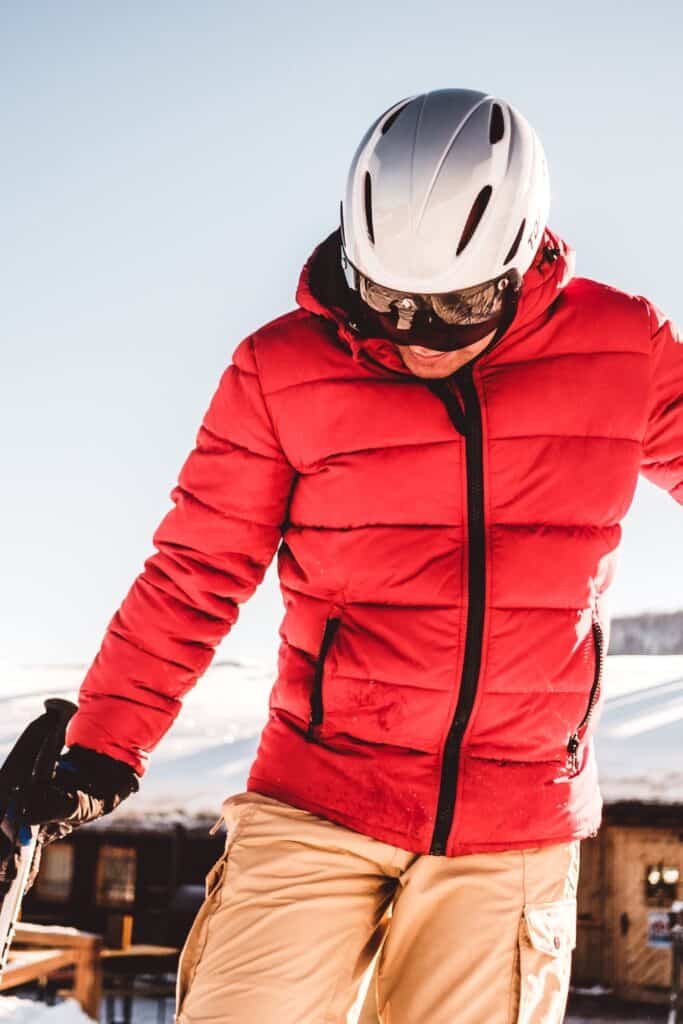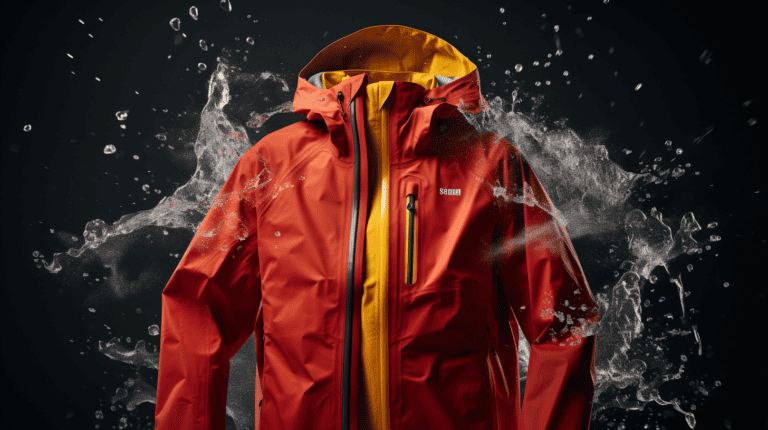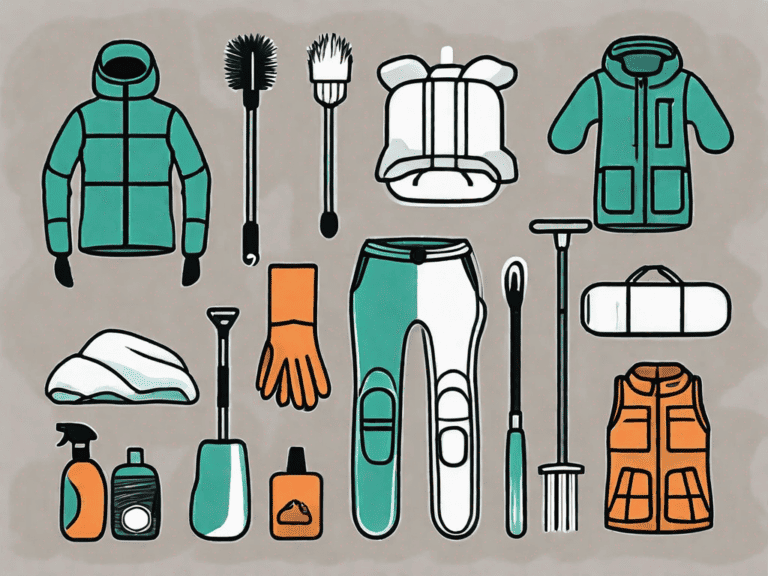Essential Layering Mistakes to Avoid

In the world of skiing, the art of layering is as crucial as the skis under your feet. It’s a skill that balances between too much and too little, a determinant of not just comfort but also performance on the slopes. Layering is not just about piling on clothes; it’s an intricate strategy to regulate body temperature, accommodate varying weather conditions, and ensure overall safety.
Despite its importance, many skiers, from beginners to the seasoned, often fall prey to common misconceptions. One might think that the thicker the clothing, the warmer and better, or that a single high-quality jacket suffices. These beliefs, however, can lead to discomfort, hindered mobility, and even risks of hypothermia or overheating.
The essence of layering lies in its adaptability – the ability to add or remove layers based on the body’s need to retain or release heat. This article delves into the essential mistakes to avoid in layering, shedding light on the nuances that make a significant difference in your skiing experience.
From selecting the wrong materials to neglecting the importance of each layer’s function, we’ll guide you through the do’s and don’ts, ensuring you’re as prepared for a day on the slopes as you are excited. So, let’s embark on this journey to master the art of layering, one layer at a time.
Understanding Layering Basics

The concept of layering in skiing is more than just wearing multiple pieces of clothing; it’s a systematic approach to managing body heat and protection from the elements. A proper layering system typically consists of three primary layers: the base layer, the mid-layer, and the outer layer. Each serves a unique function and plays a pivotal role in maintaining the skier’s body temperature and overall comfort.
The base layer is the closest to your skin. Its primary function is moisture management. By wicking sweat away from your skin, it keeps you dry and comfortable. This layer is crucial because wet skin loses heat much faster than dry skin, increasing the risk of hypothermia in cold conditions. Common materials for base layers include synthetic fabrics like polyester or natural fibers like merino wool. These materials are chosen for their moisture-wicking properties and their ability to retain warmth even when wet.
Next is the mid-layer, which serves as the main insulating layer. It traps body heat to keep you warm. The effectiveness of a mid-layer depends largely on the material and its thickness. Fleece, down, and synthetic insulators like PrimaLoft are popular choices. Fleece is lightweight and breathable, making it ideal for moderate activity levels. Down offers an excellent warmth-to-weight ratio but can lose its insulating properties when wet. Synthetic insulators, on the other hand, perform better in damp conditions and are often more durable.
The outer layer is your shield against wind, snow, and rain. This layer should be waterproof and breathable to protect against external moisture while allowing sweat vapor to escape. Materials like Gore-Tex or other similar waterproof breathable fabrics are common. This layer often includes features like adjustable cuffs, vents, and snow skirts, enhancing functionality and adaptability to changing weather conditions.
Together, these layers form a versatile system that can be adjusted based on activity level, weather conditions, and personal preference. The key is to choose materials that complement each layer’s function, ensuring maximum comfort, warmth, and protection on the slopes.
Mistake #1: Choosing the Wrong Base Layer

The base layer is fundamental in the layering system for skiing, primarily responsible for moisture management. It sits directly against the skin and has the critical job of wicking moisture away to keep you dry. When this layer fails, no matter how sophisticated your mid and outer layers are, you’re likely to end up cold and uncomfortable. Unfortunately, many skiers make key mistakes when choosing their base layer.
One common error is opting for cotton materials. Cotton absorbs and retains moisture, keeping it close to your skin. This can lead to a rapid loss of body heat, particularly in cold environments, making it a poor choice for skiing. Another mistake is selecting overly thick materials. While it might seem intuitive that thicker equals warmer, overly bulky base layers can inhibit moisture wicking and restrict movement. They also make it challenging to balance your temperature as activity levels change. Additionally, the fit of the base layer is often overlooked. Too loose, and it won’t effectively wick moisture; too tight, and it can restrict movement and circulation.
To select the right base layer, focus on materials like merino wool or synthetic fibers. Merino wool is excellent for temperature regulation and is naturally odor-resistant, making it ideal for longer ski trips. Synthetics, like polyester, are quick-drying and efficient at moisture-wicking. Look for a fit that is snug but not constrictive, allowing a full range of motion without bunching up. Also, consider the weight of the fabric. Lighter weights are great for high-intensity activities or warmer conditions, while heavier weights are better for colder days. Lastly, pay attention to seams and tags, which should be designed to minimize chafing.
Mistake #2: Overlooking the Mid-Layer’s Function

The mid-layer in a skiing ensemble is a critical component, serving as the primary source of insulation. Its role is to trap the body heat generated by your base layer, providing warmth. However, many skiers underestimate the importance of the mid-layer, leading to a few common mistakes.
A frequent error is choosing bulky materials. While it’s natural to associate bulkiness with warmth, excessively thick mid-layers can be counterproductive. They can restrict movement, making skiing cumbersome and less enjoyable. Additionally, bulky layers can lead to overheating, especially when exertion levels increase. Another oversight is ignoring breathability. Breathability is essential in a mid-layer to allow moisture vapor from the base layer to escape. Without this, moisture can accumulate, leading to a damp feeling and potential heat loss.
When selecting an effective mid-layer, the key is to consider the balance between insulation and breathability. Fleece is a popular choice because it’s lightweight, breathable, and provides excellent insulation. It comes in various weights, allowing skiers to choose based on the temperature and their activity level. For extremely cold conditions, a down or synthetic insulated jacket can offer superior warmth. Down is known for its exceptional warmth-to-weight ratio but performs poorly when wet. Synthetic insulation, while slightly bulkier, maintains insulating properties even when damp.
It’s also crucial to consider the weather conditions and your personal exertion level. On warmer days or for high-intensity skiing, a lighter mid-layer may suffice. In contrast, colder, more leisurely ski days might require something with more substantial insulation. Look for mid-layers with features like zippered vents or half-zips, which can help regulate temperature during varying levels of activity.
Mistake #3: Inappropriate Outer Layer Selection

The outer layer in a skiing outfit is your primary defense against the elements. It shields you from wind, snow, and rain, while also allowing for the evacuation of moisture from the inner layers. Despite its significance, many skiers make crucial mistakes in selecting their outer layer, compromising their comfort and safety on the slopes.
A common mistake is opting for non-waterproof materials. Skiing environments are often wet, and a non-waterproof outer layer can quickly become saturated, leading to a damp and cold experience. Another frequent error is choosing jackets or pants with poor ventilation. While waterproofing is crucial, an outer layer that doesn’t breathe can trap sweat and moisture, leading to a clammy and uncomfortable feeling. Furthermore, some skiers overlook the flexibility of the outer layer. Skiing is a dynamic sport requiring a wide range of motion, and restrictive clothing can hinder your ability to move freely and perform at your best.
When choosing an outer layer, there are several key criteria to consider. First, it should be waterproof. Look for materials like Gore-Tex, which provide excellent waterproofing while also being breathable. The seams should be sealed or taped to prevent water ingress. Breathability is equally important; many high-quality jackets and pants come with ventilation zips under the arms and along the legs, allowing you to regulate your temperature and stay comfortable.
Durability is also a factor. Skiing can be tough on gear, with frequent contact with snow, ice, and sometimes rocky surfaces. Look for robust materials that can withstand abrasion and have reinforced areas where wear is most likely, such as around the lower legs.
Finally, consider the fit and flexibility. Your outer layer should allow for a full range of movement without being excessively baggy. Adjustable cuffs, hoods, and waistbands can help ensure a snug fit, keeping the elements out and warmth in.
Mistake #4: Neglecting Layering for Extremities

When it comes to layering for skiing, the extremities – hands, feet, and head – are often overlooked, yet they are crucial for overall warmth and comfort. Proper layering of these areas is essential as they are most susceptible to cold, given their distance from the body’s core.
A common mistake is wearing overly tight socks. While it may seem like a tighter fit would provide more warmth, it actually impedes circulation, leading to colder feet. It’s essential to choose socks that fit well without being constrictive and made from materials that offer warmth and moisture-wicking properties, such as merino wool blends. Another oversight is ignoring glove liners. Similar to base layers for the body, glove liners help wick moisture away from the skin, keeping hands dry and warm. They also provide an additional layer of insulation under ski gloves or mittens.
Perhaps the most neglected is adequate head coverage. A significant amount of body heat can be lost through the head, so it’s vital to wear a hat or helmet liner under your ski helmet. These should be made of lightweight, breathable materials that provide insulation while allowing heat and moisture to escape.
For the hands, look for quality ski gloves or mittens with waterproof and breathable outer layers and insulated interiors. Mittens tend to be warmer than gloves but offer less dexterity, so choose based on your activity and personal preference. For the feet, select socks specifically designed for skiing. These are typically longer, offer targeted cushioning, and are made from materials that balance warmth with moisture management. Avoid layering multiple pairs of socks, as this can lead to a tight fit in your ski boots and reduced circulation.
Mistake #5: Ignoring Weather and Personal Activity Level

One of the most critical aspects of effective layering for skiing is the adaptability to changing weather conditions and personal activity levels. Ignoring these factors can lead to discomfort and even safety risks. Skiers often make the mistake of wearing the same layers regardless of weather variations or their exertion levels, which can result in overheating or becoming too cold.
Weather conditions in mountain environments can be unpredictable and change rapidly. Dressing in layers that can be easily adjusted allows you to adapt to these changes. On a warmer day or when the sun is out, you might need to remove a layer or open ventilation zips to avoid overheating. Conversely, a sudden drop in temperature or the onset of wind or snow requires additional insulation or a more robust outer layer.
Understanding your personal heat generation based on activity level is also crucial. During high-exertion skiing, like when tackling challenging runs or engaging in backcountry touring, your body generates more heat. In these situations, wearing too many layers or overly insulated gear can lead to excessive sweating, which dampens your clothes and leads to a rapid loss of body heat when you slow down or stop. On the other hand, leisurely skiing or riding chairlifts with minimal physical exertion will require more insulation to maintain warmth.
The importance of adjustable layering cannot be overstated. Features like underarm vents in jackets, thigh vents in pants, and full-zip mid-layers can be game-changers. They allow you to regulate your body temperature by increasing airflow during high activity or sealing up when inactive. Zippers, adjustable cuffs, and waistbands enable quick and easy adjustments as conditions and activity levels change.
Conclusion
In conclusion, mastering the art of layering is essential for any skier seeking comfort and safety on the slopes. We’ve explored the critical mistakes to avoid, each underscoring the importance of understanding and implementing an effective layering strategy. From selecting the right base layer for moisture management, and avoiding bulky mid-layers that inhibit movement, to choosing an appropriate outer layer for protection against the elements, each decision plays a vital role in your overall skiing experience.
Remember, the choice of materials and fit for your base layer is crucial in keeping you dry and comfortable. The mid-layer should provide adequate insulation without compromising breathability, while the outer layer must shield you from wind and wet conditions without trapping moisture. Equally important is the layering of extremities – hands, feet, and head – often overlooked yet vital in retaining overall body warmth.
Investing in quality gear and being mindful of these layering techniques will not only enhance your performance but also ensure safety in various weather conditions. Layering in skiing is not just about piling on clothes; it’s a thoughtful process, of adapting to changing environmental conditions and personal activity levels. By understanding and applying these principles, skiers can enjoy the slopes to their fullest, embracing the winter elements with confidence and comfort.






